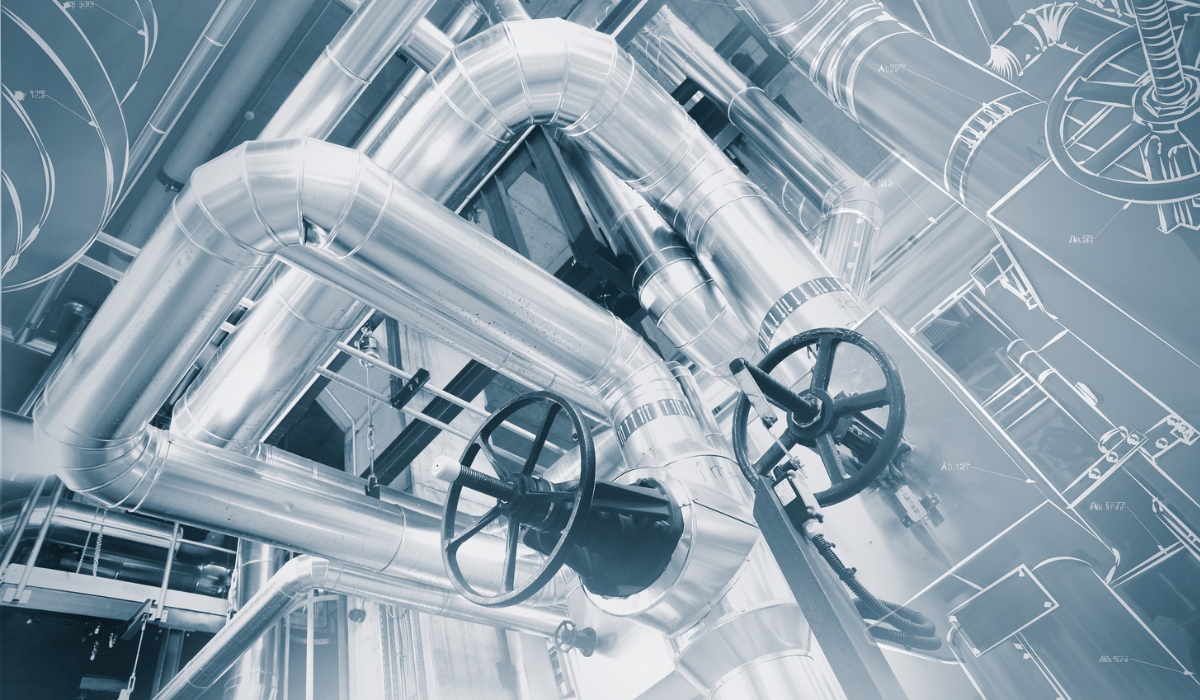Digital Twins in Industry 4.0: How to Anticipate Errors and Optimize Results
The digital transformation in the industry has evolved rapidly in recent years. In this context, digital twins are positioned as key tools in the era of Industry 4.0, allowing for error anticipation, cost reduction, and optimization of results across multiple sectors. From mining and metallurgy to hospitality, universities, hospitals, construction companies, and ports, the implementation of technologies such as scan2bim is revolutionizing the way infrastructures are designed, monitored, and maintained.
In this blog, we will explore how to integrate these technologies, detailing strategies and best practices to maximize industrial profitability.
What are Digital Twins and Why Do They Matter?
A digital twin is a virtual replica of a physical asset, process, or system. Thanks to this representation, it is possible to simulate scenarios, anticipate failures, and optimize performance in real time. With the advent of Industry 4.0, these tools have become essential elements for:
- Anticipating Errors: By simulating a system’s behavior, potential failures can be detected before they occur in the physical world.
- Reducing Costs: The ability to predict and prevent problems minimizes investments in repairs and corrective maintenance.
- Optimizing Results: The integration of real-time data allows for proactive process adjustments, improving operational efficiency.
The Connection Between Digital Twins and Industry 4.0
Industry 4.0 is characterized by the digitization and automation of production processes through advanced technologies. In this context, digital twins not only enable detailed simulation but also integrate with artificial intelligence, IoT, and scan2bim systems to transform data into useful information. The scan2bim technique, for example, converts 3D scans into precise BIM (Building Information Modeling) models, facilitating the creation of digital twins for complex infrastructures.
This synergy between digital twins and emerging technologies opens new opportunities for industries requiring high levels of precision and efficiency. By leveraging these technologies, companies can not only improve their processes but also innovate in project development and strategic decision-making.
Read how Foundtech is Gaining Ground with Digital Twins.
Implementation of Digital Twins in Key Sectors
1. Mining and Metallurgy Industry
In sectors such as mining and metallurgy, safety and operational efficiency are vital. Digital twins allow for:
- Simulating operations in extreme environments.
- Anticipating possible failures in machinery and structures.
- Planning preventive maintenance with precision.
Additionally, by incorporating scan2bim, detailed digital models of facilities and equipment can be created, facilitating wear analysis and optimization of production processes
2. Hospitality and Healthcare Sector
For the hospitality industry and hospitals, where facility management and safety are fundamental, digital twins offer:
- Total control over infrastructure, allowing real-time adjustments to improve energy and operational efficiency.
- Simulations that help identify critical points in HVAC, electrical, and emergency systems.
- Space optimization and improvement of user experience.
The integration of technologies such as scan2bim ensures accurate models, which are essential for planning renovations or expansions without disrupting daily operations.
3. Universities and Research Centers
In the academic field, digital twins are used for:
- Creating virtual laboratories and simulating experiments in a controlled environment.
- Developing research projects in collaboration with industry, driving innovation and new technologies.
- Improving campus management by optimizing resource use and operational efficiency.
This technology also provides opportunities for universities to train future professionals in an Industry 4.0 environment.
4. Construction and Logistics/Ports
Construction companies and logistics and port sectors can significantly benefit from the implementation of digital twins through:
- The planning and execution of projects with a high degree of precision, minimizing risks and cost overruns.
- The simulation of logistical flows to optimize the movement of goods and reduce downtime.
- The integration of scan2bim data to create detailed 3D models of infrastructures, facilitating early detection of errors and structural failures.
How to Integrate Digital Twins and Scan2BIM into Your Processes
To effectively implement this technology, it is essential to follow a well-defined strategy that includes:
- Initial Diagnosis and Goal Definition:
Evaluate your industry’s specific needs and define short- and long-term goals. This may include cost reduction, efficiency improvement, or failure anticipation. - Technology and Vendor Selection:
Choose scan2bim solutions and digital twin platforms that integrate seamlessly with your current systems. It is essential to work with vendors who have experience and a solid track record in implementing Industry 4.0 projects. - Training and Talent Development:
Personnel training is key to ensuring successful integration. Investing in training and creating multidisciplinary teams will ensure optimal use of new technologies. - Implementation and Continuous Monitoring:
Once the system is implemented, it is crucial to establish a monitoring and data analysis process. Digital twins must be constantly updated to reflect changes in the physical environment and allow for real-time adjustments. - Feedback and Continuous Improvement: :
User feedback and the integration of new technologies will allow for system refinement, adapting to market changes and emerging industry needs.
Benefits and Return on Investment
Adopting digital twins in the era of Industry 4.0 offers multiple advantages, including:
- Proactive Prevention: The ability to simulate different scenarios allows for identifying and correcting errors before they affect real operations.
- Resource Optimization: With accurate real-time data, material, energy, and labor usage can be optimized, translating into significant savings.
- Greater Safety: Simulating emergencies and potential failures improves safety planning and reduces operational risks.
- Continuous Innovation: The integration of advanced technologies such as scan2bim fosters an innovation culture that drives market competitiveness.
Conclusion
The implementation of digital twins in Industry 4.0 represents a paradigm shift in how industrial processes are managed and optimized. With tools like scan2bim, companies across various sectors—from mining and metallurgy to construction, logistics, hospitality, hospitals, and academic centers—can anticipate errors, reduce costs, and maximize project profitability.
For Foundtech, positioning itself as a leader in these technologies means offering comprehensive and highly accurate solutions aligned with the industry’s current needs. Adopting this technology not only boosts operational efficiency but also strengthens the ability to innovate and stay ahead in an increasingly competitive market.
Ultimately, digital twins are a strategic investment for any company looking to evolve in the digital age. The future is digital, and now is the time to anticipate challenges to optimize results!



